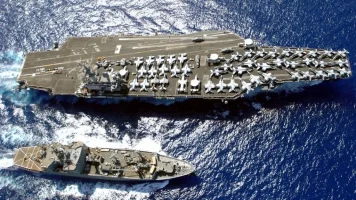- Views: 4K
- Replies: 36

Russia is preparing to offer India a substantial Government-to-Government (G2G) deal for the sale of 60-70 Su-57E fifth-generation fighter jets during President Vladimir Putin's anticipated visit in early 2025, according to sources familiar with the matter.
This proposal marks a renewed Russian effort to deepen defence cooperation with India, particularly in the realm of advanced combat aircraft, following India's withdrawal from the joint Fifth-Generation Fighter Aircraft (FGFA) program in 2018.
The proposed deal comes as the Indian Air Force (IAF) grapples with a concerning depletion of its combat squadron strength, currently below the sanctioned strength of 42 squadrons. Russian officials have indicated that the offer aims to address this shortfall by providing a swift infusion of advanced air power, with a suggested number of 60-70 Su-57E jets.
The Su-57E is the export variant of the Sukhoi Su-57 (NATO reporting name: Felon), a single-seat, twin-engine, multirole fighter aircraft designed for air superiority and attack operations. Developed by Sukhoi, part of Russia's United Aircraft Corporation, the Su-57 is touted as a stealth-capable aircraft with supercruise, super-maneuverability, and advanced avionics to overcome prior generation fighter aircraft as well as ground and naval defenses.
The jets offered to India are slated to be equipped with the advanced AL-51F engines. These engines are being promoted as true fifth-generation powerplants, promising enhanced thrust-to-weight ratio, fuel efficiency, and stealth characteristics.
Russia is reportedly prepared to offer the Su-57E at a price point significantly lower than that of the French Dassault Rafale, a 4.5-generation twin-engine fighter already in service with the IAF.
This competitive pricing, combined with the advanced capabilities of the Su-57E, could make the Russian offer attractive to the Indian defence establishment, which is constantly evaluating options to modernize its military hardware.
To meet the potential demand, Russia is actively expanding its Su-57 production capabilities. Sources suggest that annual production is slated to increase from the current 15 units to 25 units in the coming years, potentially enabling faster delivery schedules for any potential Indian order.
The offer represents a revival of Russian efforts to engage India in high-end defence technology transfers, following the collapse of the ambitious FGFA project.
The FGFA program, intended to develop a tailored two-seat variant of the Su-57 for the IAF, was abandoned by India in 2018 due to concerns regarding delays, escalating costs, technology transfer issues, and whether the platform truly met fifth-generation fighter specifications. According to open sources, the FGFA project was estimated to cost over $6 billion.
Russian officials have been actively lobbying for the Su-57E since then, emphasizing the aircraft's advancements and arguing that it now meets India's stringent requirements for a next-generation combat platform.
While the Su-57 made its maiden flight in 2010, full-scale production was delayed due to technical difficulties. The aircraft first saw combat during the Syrian civil war in 2018, and has reportedly been used in the ongoing war in Ukraine. It officially entered service with the Russian Aerospace Forces in December 2020.
The proposal also arrives at a crucial juncture for the IAF, which is looking for interim solutions to bolster its air power while its indigenous Advanced Medium Combat Aircraft (AMCA) program, aimed at developing a domestic fifth-generation fighter, is still in the development phase. The first flight of the AMCA is not expected until at least 2027, with service entry not anticipated until the 2030s. An acquisition of the Su-57E could potentially serve as a stop-gap measure until the AMCA is fully operational.
The potential sale of the Su-57E to India will be closely watched by global defence analysts, as it could significantly impact the regional balance of power and shape the future of Indo-Russian defence ties. The deal's success hinges on various factors, including the final price, technology transfer agreements, and India's assessment of the Su-57E's capabilities in relation to its operational requirements and the evolving geopolitical landscape.




